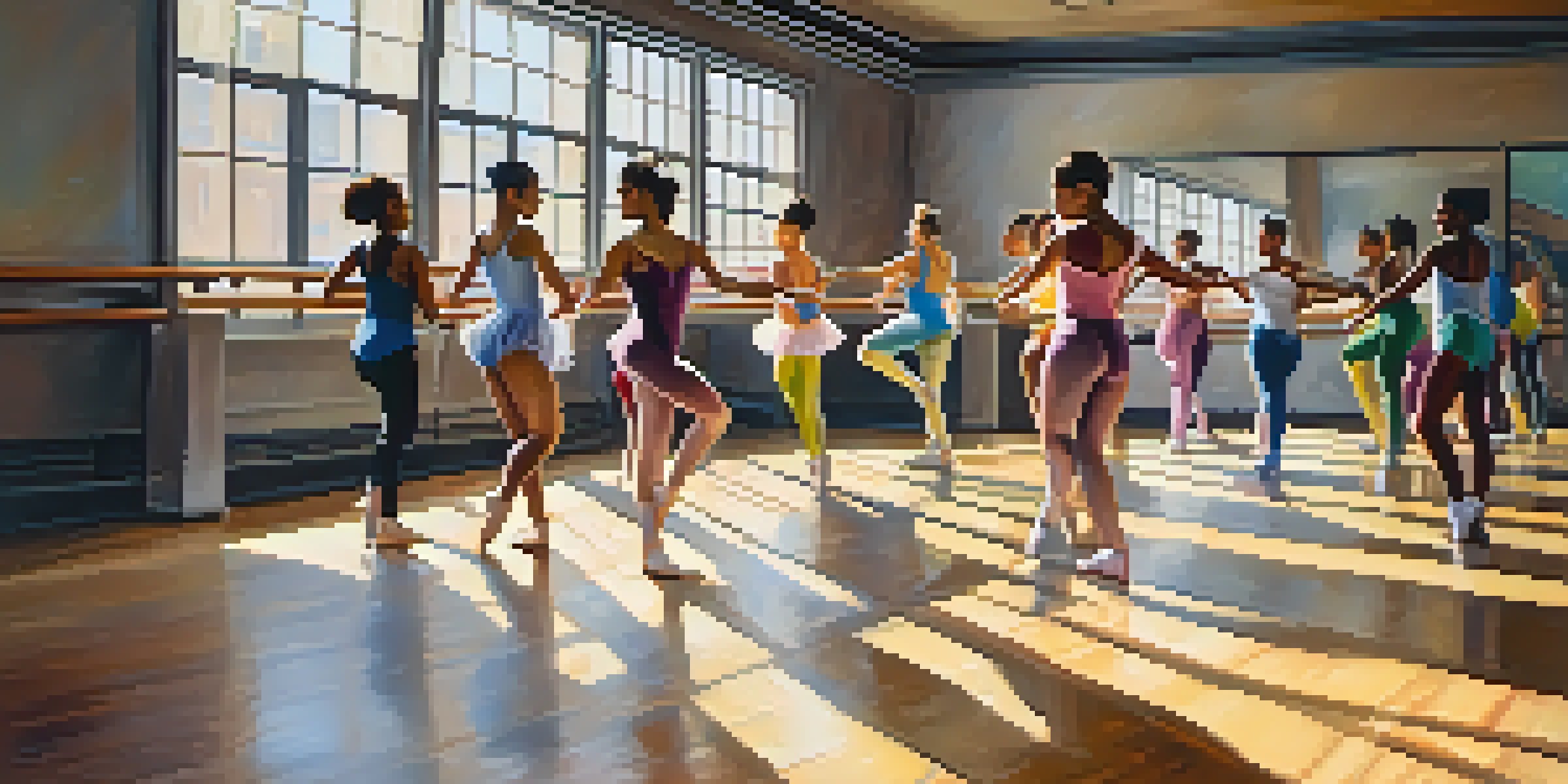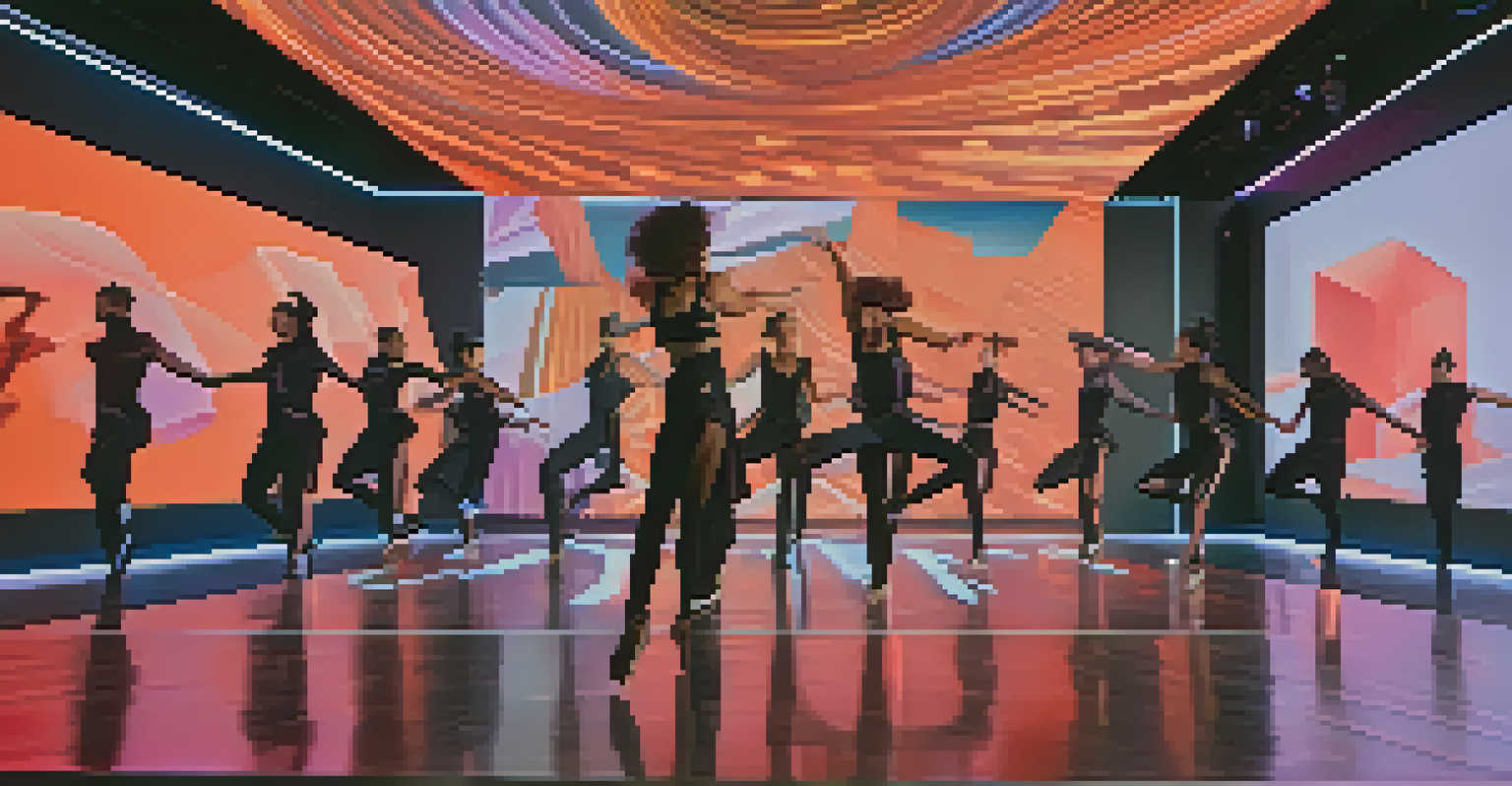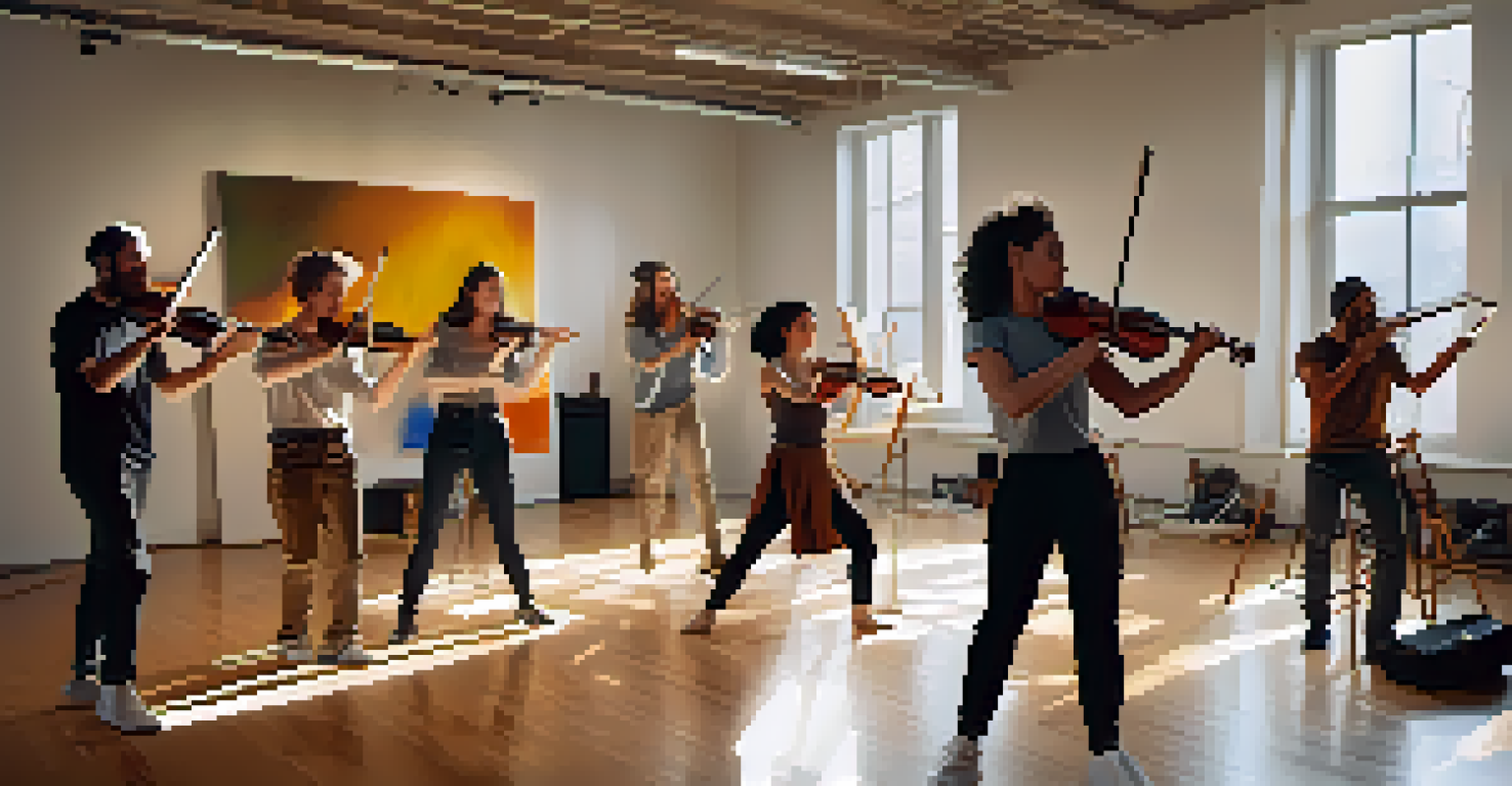Innovative Choreography: Merging Dance Techniques for New Styles

The Evolution of Dance: A Historical Perspective
Dance has always been a reflection of culture and societal changes. Over the years, various styles have emerged, influenced by historical events, music trends, and even technological advancements. From the classical ballet of the 18th century to the energetic hip-hop of today, each era has contributed unique movements that shape how we express ourselves through dance.
Dance is the hidden language of the soul.
As different styles evolve, they often borrow elements from one another, leading to innovative combinations. For instance, the fusion of ballet and street dance has given rise to new forms that maintain the grace of classical techniques while incorporating the raw energy of urban movements. This blending not only keeps dance fresh but also allows for creative freedom among dancers.
Understanding the historical context of dance helps us appreciate the innovative choreography that emerges today. By recognizing how past influences shape contemporary styles, we can see the beauty in the diversity of dance and how it continues to evolve.
Breaking Boundaries: The Art of Fusion in Dance
Fusion dance is all about breaking down barriers between styles, creating something entirely new and exciting. Dancers are increasingly experimenting with combinations like contemporary and jazz or salsa and ballet, resulting in unique performances that captivate audiences. This art of fusion encourages dancers to step out of their comfort zones and explore the full range of their abilities.

For example, a choreographer might blend the fluid movements of contemporary dance with the sharp, rhythmic beats found in hip-hop. This not only creates visually stunning performances but also inspires dancers to discover their personal style, leading to a more authentic expression of their artistry. It’s a wonderful reminder that creativity knows no bounds.
Dance Reflects Cultural Evolution
Dance has evolved over time, influenced by cultural shifts, historical events, and musical trends.
Moreover, fusion in dance fosters collaboration among artists from different backgrounds. When dancers come together to share their techniques and ideas, they spark innovation, allowing for endless possibilities in choreography and performance.
Embracing Technology: Digital Tools in Choreography
In today's digital age, technology plays a significant role in the evolution of dance choreography. Tools like video editing software and motion capture allow choreographers to explore and visualize their ideas in ways that were previously unimaginable. This technology not only enhances creativity but also opens up new avenues for collaboration.
To create is to live twice.
For instance, virtual reality can immerse dancers in different environments, providing inspiration for movements that reflect their surroundings. Dancers can experiment with how their bodies interact with digital landscapes, resulting in innovative performances that blend the physical and virtual realms. This intersection of technology and dance encourages a fresh perspective on traditional techniques.
Furthermore, social media platforms enable dancers to share their work with a global audience, fostering community and collaboration. With just a click, artists can connect, inspire, and learn from each other, leading to a rich tapestry of innovative choreography that transcends geographical boundaries.
The Role of Collaboration in Innovative Choreography
Collaboration is at the heart of creating innovative choreography. When dancers, choreographers, and musicians come together, they bring a wealth of ideas and perspectives that can elevate a performance. This teamwork often leads to unexpected and inspiring results, pushing the boundaries of what dance can be.
For example, a choreographer might partner with a live musician to create a piece that responds to the rhythm and mood of the music in real-time. This dynamic interaction can lead to spontaneous movements and fresh interpretations, making each performance unique. The synergy between different artists can transform a simple idea into a breathtaking spectacle.
Fusion Encourages Creative Expression
The art of fusion in dance breaks down barriers, allowing dancers to explore and combine different styles for innovative performances.
Moreover, collaborative projects can also include visual artists and designers, integrating elements like lighting and set design into the choreography. This holistic approach creates a multi-sensory experience for audiences, illustrating how innovative choreography can thrive in a collaborative environment.
Cultural Influences: Celebrating Diversity in Dance
Dance is a universal language that reflects the diversity of cultures around the world. As dancers incorporate elements from various traditions, they create innovative choreographies that celebrate this richness. By merging styles like African dance with contemporary forms, artists can tell stories that resonate on multiple levels.
Cultural influences can breathe new life into choreography, allowing dancers to explore themes of identity and heritage. For instance, a choreographer might draw inspiration from traditional folk dances, weaving them into modern routines to honor their roots while appealing to contemporary audiences. This blend fosters a deeper understanding of different cultures and their significance.
Furthermore, celebrating diversity in dance encourages inclusivity within the dance community. When artists embrace influences from various backgrounds, they create a more welcoming environment that recognizes and values the contributions of all.
Innovative Choreography: The Impact on Performers
Innovative choreography not only excites audiences but also profoundly impacts performers. By exploring new styles and techniques, dancers can enhance their skills and broaden their artistic horizons. This continuous learning process keeps performers engaged and motivated, fueling their passion for dance.
For instance, a dancer who usually practices classical ballet might try their hand at hip-hop, discovering new ways to express themselves and challenge their physicality. This cross-training can lead to improved versatility and adaptability, making them more dynamic artists. As they embrace innovative choreography, performers often find new confidence in their abilities.
Technology Transforms Choreography
Digital tools and social media have revolutionized choreography, enabling collaboration and global sharing among artists.
Moreover, this exploration can lead to personal growth, as dancers learn to embrace risk and vulnerability. The journey of trying new styles fosters resilience and creativity, essential traits for any artist striving to make their mark in the world of dance.
The Future of Dance: Trends to Watch
As we look to the future, innovative choreography will continue to evolve alongside societal changes and technological advancements. Emerging trends such as immersive performances, where audiences are part of the experience, are likely to gain popularity. This shift creates new opportunities for dancers to engage with their viewers in exciting ways.
Additionally, we can expect to see more collaborations across disciplines, blending dance with other art forms like theater, visual arts, and even fashion. This interdisciplinary approach not only enriches choreography but also expands the scope of creative expression, allowing dancers to explore their craft in new contexts.

Finally, as dance becomes more accessible through online platforms and virtual classes, we may witness a surge of innovative choreographers from diverse backgrounds. This democratization of dance will undoubtedly lead to a broader range of styles and influences, shaping the future of choreography in ways we can't yet imagine.